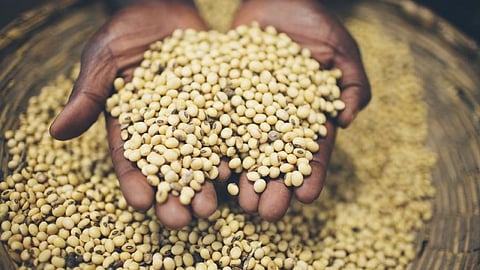Tamil Nadu’s COVID-19 relief scheme is well-intentioned, but can be more efficient
Most sections of the society, the vulnerable ones in particular, experienced a steep decline in earnings during the novel coronavirus disease (COVID-19) pandemic.
In April 2020, the All India Anna Dravida Munnetra Kazhagam (AIADMK) government announced COVID-19 financial relief measures: ‘Rice card’-holders were to be paid Rs 2,000 per month for three months. The payment, however, was made only for the month of April 2020.
Meanwhile, the Dravida Munnetra Kazhagam (DMK), in its election manifesto released February 2021, promised to pay Rs 4,000 per month to the rice card-holders. The party voted to the power in the election held in March 2021.
The new government kept its election promise and announced May 11 that it would implement COVID-19 financial relief fund scheme from May 15. In the month of May, the rice card-holders were paid only Rs 2,000 in a single instalment.
In June, they were paid Rs 4,000 in two equal instalments. The beneficiaries were supposed to collect tokens from the designated fair price shops (FPS) and come back on specific dates to collect cash.
An FPS dealer collected Rs 4 lakh daily from a bank branch to distribute the same to the rice card-holders at the rate of Rs 2,000 per card.
There are three types of social benefit cards in circulation in Tamil Nadu: The Sugar card, the rice card and the Antyodaya Anna Yojana card.
A household with a sugar card gets two kilograms (kg) of sugar at Rs 32 per kg, instead of the market price of around Rs 45 per kg. A household with a rice card is entitled to 20 kg rice free of cost. The staple sells at around Rs 35 per kg at the market. A household having AAY card gets 35 kg rice free of cost.
Thus, a sugar card-holder is saves a paltry Rs 26, while a rice card-holder Rs 700 and a AAY card-holder Rs 1,225.
All the cardholders get a common basket of items at a subsidised rate.
Common basket of items received by card-holders
| Item | Quantity | Ration price | Market Price | Price Difference | Savings |
| Tur dal | 1 kg | Rs 48 / kg | Rs 95 / kg | 47 | 47 |
| Moong dal | 1 kg | Rs 48 / kg | Rs 95 / kg | 47 | 47 |
| Salt | 1 packet | Rs 5 / packet | Rs 10 / packet | 5 | 5 |
| Tea Leaf | 100 gram | Rs 25 / 100 gram | Rs 35 / 100 gram | 10 | 10 |
| Wheat Flour | 5 kg | Rs 15 / kg | Rs 42 / kg | 27 | 135 |
| Sub Total | - | - | - | - | 244 |
| Kerosene (those without gas cylinders) |
3 litres | Rs 18 / litre | Rs 90 / litre | 72 | 216 |
| Total | - | - | - | - | 460 |
Beneficiaries with gas connections save Rs 244 per month buying items in the common basket at FPS. Those without gas connections save Rs 460 a month. Occasionally, palm oil is also distributed through fair price shops.
Inefficient mechanism
The current mechanism of helping the poor is cumbersome and inefficient. Under the existing scheme, the fair price shop dealer, in addition to his regular duty, has to distribute the token to the rice card-holders.
Further, the dealer has to visit the specified bank branch every day to collect the money to distribute.
Likewise, the card-holders have to visit the FPS twice in a work day — once for collecting the token and again to collect the cash. In the process, sometimes card-holders may lose their daily earnings.
To save both the FPS dealers and the beneficiaries from this hassle, the cash benefit can be directly credited into the bank account of the card-holders.
Philosophy behind the scheme
The philosophy behind the scheme is that due to the pandemic, the poor households have suffered a substantial loss in earnings and consequently, are not in a position to purchase essential items of consumption.
In such a situation, it is the moral obligation of a welfare state to come to the rescue of the poor. The government is partly fulfilling its obligation by providing some of the essential items at a subsidised rate through FPS.
The quantity of essential items provided may not be adequate to meet the requirement of the household. Hence, the poor households are compelled to buy additional quantities of these items from the open market.
Further, many essential items like tamarind, soap and hair oil are not supplied through FPS. To buy these items, the poor require cash. Therefore, the government is assisting the poor by providing cash assistance to compensate for the loss in their earnings.
One question, however, lingers: Do the poor buy essential items from the assistance given by the government or spend the same on unnecessary things like liquor? To ensure that the poor make optimal use of the cash benefit, the government should roll out a scheme similar to the food stamp policy.
As a part of scheme, the government has to encourage self-help groups (SHG) run by women to start shops with only essential items. The government should distribute stamps to the poor, which are valid only in shops managed by these SHGs.
The owners of these shops may collect cash from specified banks in exchange for stamps. This mechanism will not only ensure optimal utilisation of government assistance by the poor but also empower women.
Views expressed are the author’s own and don’t necessarily reflect those of Down To Earth.



